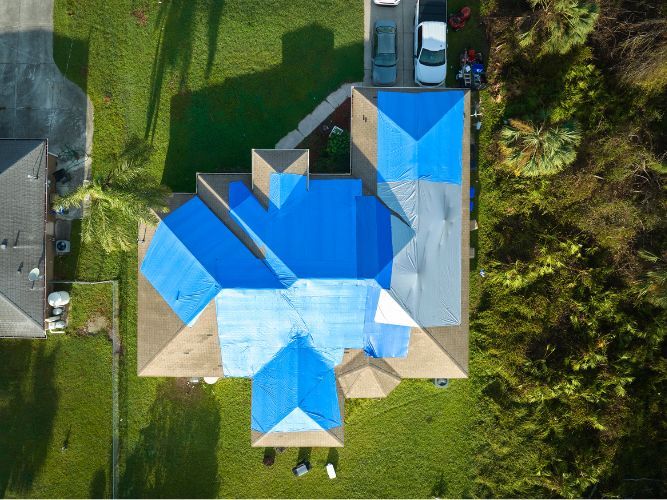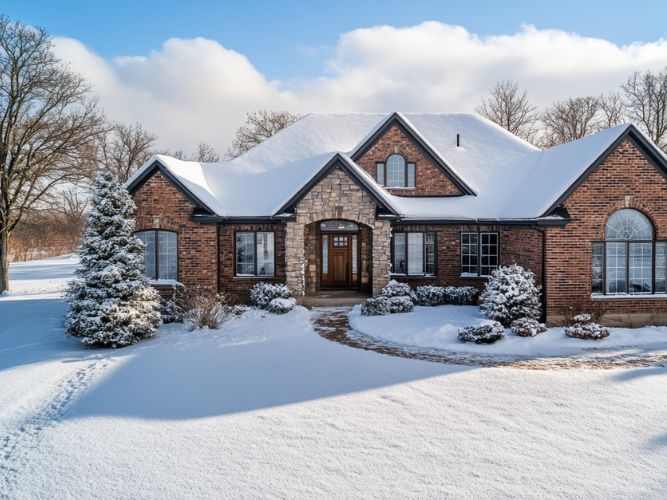What is the average cost of roof installation in Bolingbrook, IL?
The average cost of roof installation in Bolingbrook, IL, depends on factors like roof size, material, labor rates, and additional structural requirements. Generally, costs range from mid to high four figures or more. Homeowners should consider these variables to get an accurate estimate for their specific project.
In addition, understanding the impact of local weather conditions, permit regulations, and disposal fees can help in planning a budget effectively.
A well-planned installation ensures long-term durability and cost savings. Boss Roofing – Siding Experts can provide professional guidance and accurate pricing based on your needs.
Factors That Affect Roof Installation Costs
Roof installation costs are influenced by various elements that homeowners should evaluate before starting a project.
Being aware of these factors can help in making informed decisions and avoiding unexpected expenses. Some of the most crucial cost-determining aspects include:
- Roof Size: Larger roofs require more materials and labor, increasing costs.
- Material Type: Asphalt shingles are more affordable than premium materials like slate or metal.
- Roof Complexity: Steeper slopes and complex designs demand more expertise and time.
- Labor Costs: Experienced contractors may charge more but ensure quality workmanship.
- Permits and Building Codes: Local regulations may require specific reinforcements, adding to expenses.
- Weather Conditions: Delays due to extreme cold or heavy rain can impact labor costs.
Understanding these factors helps homeowners plan their budget effectively and avoid unexpected expenses.
Types of Roofing Materials and Their Price Impact
The choice of roofing material significantly impacts both the cost and longevity of a roof.
Different materials offer distinct advantages and drawbacks, making it essential to choose wisely.
Homeowners should evaluate the following options based on their needs and budget:
- Asphalt Shingles – Most affordable, easy to install, and widely used.
- Metal Roofing – Durable, energy-efficient, but comes at a higher price.
- Tile and Slate – Offers a premium look but requires specialized installation and structural support.
- Wood Shingles/Shakes – Aesthetic appeal but requires regular maintenance.
- Synthetic Roofing – Composite materials that balance cost, durability, and energy efficiency.
Selecting the best material depends on budget, climate conditions, and maintenance preferences.
Labor Costs and Roofing Contractor Selection
Labor costs can vary significantly based on multiple factors, making it a key consideration when estimating roof installation expenses.
Homeowners should be mindful of the following aspects:
- Experience and Reputation: Established contractors charge more but ensure high-quality work.
- Project Complexity: Unique designs and steep pitches require additional labor time.
- Demand for Roofers: Prices may increase during peak seasons due to high demand.
- Warranty Coverage: Some contractors include warranty costs in their pricing.
To ensure a fair price, homeowners should obtain multiple quotes, verify credentials, and review customer feedback before selecting a contractor.
Roof Removal and Disposal Fees
Before a new roof can be installed, the old roofing material must be removed and properly disposed of.
This process adds to the overall cost of installation. Key considerations include:
- Material Weight: Heavier materials like slate require specialized disposal, increasing costs.
- Contractor Policies: Some contractors include removal in estimates, while others charge separately.
- Dumpster Rental & Landfill Fees: These vary based on material type and disposal method.
- Recycling Options: Some roofing materials can be recycled, reducing costs and environmental impact.
Clarifying disposal fees upfront prevents unexpected expenses.
Cost Differences Between Full Replacement and Overlay
There are two main options when installing a new roof: a full replacement or an overlay. Each method has different cost implications:
- Full Replacement: Removing the existing roof before installing a new one ensures long-term durability but is more expensive.
- Overlay: Adding a new layer of shingles over the existing roof is more affordable but may not be suitable for all roofs.
While a full replacement provides better long-term value, an overlay might be a viable option for those on a budget.
Seasonal Impact on Roof Installation Costs
Roofing costs fluctuate throughout the year due to seasonal demand and weather conditions.
Understanding the best time to install a roof can help homeowners save money. Here’s what to expect in different seasons:
- Peak Season (Summer & Early Fall): Higher labor costs due to high demand.
- Off-Peak (Winter & Late Fall): Lower prices but potential delays due to weather conditions.
- Spring & Early Fall: Balanced pricing with moderate weather conditions.
Scheduling a roof installation during the off-season can result in better pricing and availability.
Warranty and Long-Term Cost Considerations
Warranties play an essential role in determining the long-term value of a roofing investment. Homeowners should be aware of the different warranty options available:
- Manufacturer Warranties: Cover material defects.
- Contractor Warranties: Cover workmanship quality.
- Premium Roofing Materials: Often come with extended warranties, increasing initial costs but offering better long-term value.
Homeowners should review warranty details to ensure maximum protection and cost savings.
Energy Efficiency and Roofing Material Choices
Energy-efficient roofing can lead to significant savings over time. Making informed choices about materials and insulation can reduce utility costs and improve indoor comfort. Consider the following:
- Reflective Shingles: Reduce heat absorption and cooling costs.
- Metal Roofing with Coatings: Reflects sunlight and improves energy efficiency.
- Proper Insulation & Ventilation: Enhances temperature regulation and reduces energy bills.
Investing in energy-efficient materials leads to long-term financial benefits.
Frequently Asked Questions About Roof Installation
How long does a roof installation take?
Most standard roof installations take 1-3 days, depending on the size, complexity, and weather conditions.
Can I install a new roof over an old one?
Yes, but only if the existing roof structure is in good condition. Overlays are more affordable but may not be suitable for all roofs.
What is the best roofing material for Bolingbrook’s climate?
Asphalt shingles and metal roofing are popular due to their durability and weather resistance. The best choice depends on budget and long-term maintenance considerations.
Final Thoughts on the Average Cost of Roof Installation
Roof installation costs in Bolingbrook, IL, vary based on material choice, labor expenses, permits, and other factors.
Homeowners should budget carefully and consider long-term benefits when selecting roofing options. Investing in quality materials and hiring experienced professionals ensures a durable and cost-effective solution.
For expert roofing services and accurate pricing, consult Boss Roofing – Siding Experts today.









